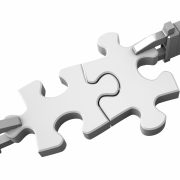Automation in manufacturing,
is it for you?
In recent years, technological advances have changed the face of manufacturing efficiency forever. Years ago, all manufacturing work was done by hand, however, computers and technology have now begun to take over the industry. Automation has begun to offer companies a manufacturing advantage in terms of mass production, speed and quality. But, like all new technologies, there are both advantages and disadvantages of adopting an automated system.
Advantages of automation
One of the greatest advantages that automation can offer a manufacturing business is reduced production time. An automated machine is able to carry out processes much faster and in greater quantities than a team of employees could. As every movement and process the machine needs to follow is coded in and simply repeated, there is no room for human error, ensuring more consistent quality and efficiency.
Using automated machines that don’t require employees to use the equipment offers increased safety for your staff. As tasks that could potentially pose a risk or injury can be completed automatically by a machine instead, the entire work environment becomes safer.
On top of fewer safety problems, automation can save you a huge amount in the long run on employee costs. As automated systems require fewer staff to run, savings can be made on staff pay, benefits and sick days, for example.
Disadvantages of automation
As with any new technology, it is important that you weigh up whether or not the advantages of the investment outweigh the potential disadvantages. For example, as much as requiring fewer staff to run your system can help you save on your overheads, it can contribute to high unemployment rates. If you are keen to run an eco-friendly manufacturing process, you should also take into account that some automated machines can produce more pollution.
Automated machinery can be one of the largest operating costs that a company may have to contend with. When compared to other types of equipment, the initial investment required for an automated system can be quite costly. Depending on the type of machine, the initial investment can be anywhere between thousands or millions of pounds. After purchasing an automated machine, there is also the potential for additional expenses such as process development or staff training.
When looking into an automated system, it is important to weigh up whether or not the advantages the system offers outweighs the disadvantages that you might experience. In any case, it is important to have spare parts lined up in case the worst should happen. To find out how we could help with spares for your equipment, get in touch today.
is it for you?







